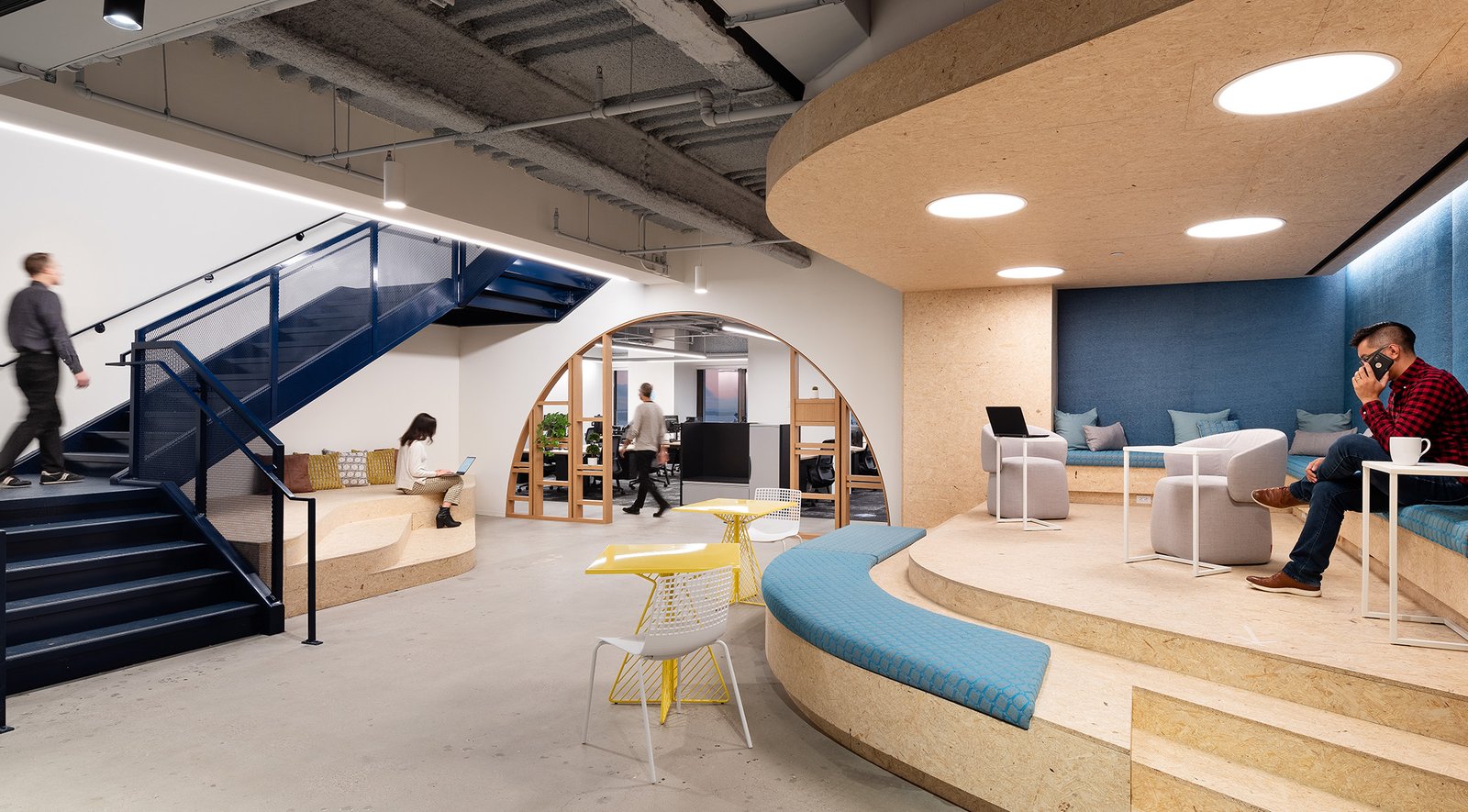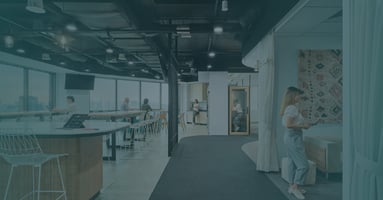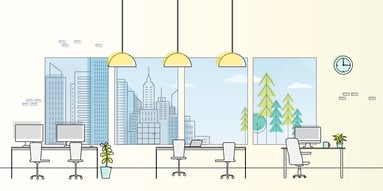Building flexibility into design and strategic thinking to future proof your workplace

“Work is no longer a place.” What trends will emerge as drivers to lead workplaces into the future?
The pandemic has caused a fundamental shift in the commercial real estate landscape. Companies are exploring the next steps for their return to the workplace and looking for ways to tie in new technology, enhance employee experiences, and drive organizational culture. Now that we’re about halfway through the disruption cycle, specifically with office spaces, we’re seeing three emerging groups initiating new ways of operating.
- Traditionalists – cultures that are grounded around in-person environments with a low investment in virtual working and higher investment in physical work environments.
- Progressives – cultures that are flexible and promote a hybrid work model with employees being comfortable working remotely or in offices. Investment for this model is equally split between the virtual and built environments to support hybrid work models.
- Visionaries – cultures that encourage autonomy and remote work with employees who come into the office as needed. There is significant spend in technology to enhance the virtual environment and to monitor productivity and performance.
These profiles will create baselines for how work is done in the future. What will traditionalists’ jumping-off point be versus visionaries?
We believe workplace design will play a critical role in creating and rebuilding culture. Progressives and visionaries will likely adopt hybrid work approaches and use their offices to develop more emotional connections, encourage collaboration, and create personal experiences. They’ll repurpose their spaces to support new work modes, while traditionalists may maintain existing spaces with guidelines around workstation spacing and sharing. In each of these scenarios, people leaders will have to work closely with operations leaders to influence space design decisions.
Future office demand + design changes = business changes
As companies look at solutions to bring their people back into the office in meaningful and safe ways, there’s uncertainty about the future of real estate. Traditionalists and even some progressives are waiting to make changes, and despite having forward thinking ideas, even visionaries can’t predict what the future will hold. What will the landscape look like eighteen months down the road, in the next five, or even ten years? How can we make adjustments now while keeping a long-term view?
“Building flexibility into strategic planning and design will be critical as we think about the future. Commercial real estate heads will have a pulse on the hybrid work model, monitoring effectiveness and looking for early signs of a shift. Businesses will need to pivot quickly as space utilization needs change.”
We know flexibility will be a key part of workplaces in the future, which is why we suggest piloting spaces to test new strategies and models. Large companies are starting to roll out such programs; repurposing space to be more experiential for staff, with a focus on enhancing relationships, collaboration and culture. Conducting short utilization studies (60-90 days) will help leadership understand what workplace designs are effective for employees.
Other strategies like hub and spoke models support accelerating trends like the migration to the suburbs and the urban shift, allowing companies to maintain a city presence, while providing staff with much-craved collaboration, culture, and connection in spoke locations. We’re even seeing C-suite focused hubs emerging in suburban neighborhoods to support board related tasks, client meetings, and leadership-driven activities.
Integrating technology in the workplace
As we see changes in workplace design, in the background, technology has been a critical piece to support new ways of working and processes. For all, 2020 was the year of video conferencing services with platforms like Zoom and Microsoft Teams enabling workforces to transition to remote working and continue day-to-day operations. Firms have since pivoted their business practices to reflect this status quo — leveraging digital tools and technology to power collaboration, communication, and efficiency.
In 2021, we expect technology to become a more ingrained part of work environments. Virtual tools in response are releasing new features to simulate in-person meetings and functionality. For example, Microsoft Teams has announced a new feature—Dynamic View, intended to make meetings more personalized and collaborative with virtual breakout rooms to support discussions and brainstorming.
With hybrid workplace on the horizon, offices will need to be outfitted to support in-person and remote workers, providing them with the technology and space to seamlessly connect. Leadership communication and change management will play an essential role in navigating the return to the workplace. We suggest outlining clear protocols and processes to guard against burnout, manage meetings and communication expectations (in-person and virtual), and coordinating teams to make sure they are driving the right outcomes.
“We’re seeing a fundamental change from where things were. Digital innovations, increasing sharing and collaborating, and reimagined horizons, like a world without email, will create a monumental change in the workplace.”
A framework for the modern workplace
Propeller, our hybrid workplace framework uses data to show clients what their future office could look like. Whether it’s a more conservative approach or pushing the boundaries of workplace strategy, our model can help companies outline the purpose of their office. From preparing a playbook, to repurposing space, or opening satellite locations, our strategy-led solution is customizable to fit the needs of businesses and their people.
“When we think about office demand and culture, and the impact on office design, that’s where we can really add value. Businesses need to consider factors like well-being, performance, productivity and working autonomously to create a balanced work environment for their people. Our workplace strategists and designers are ready to analyze, solution and implement changes to your workplace of the future.”
Check out the full article
New York Real Estate Journal
Global Trade
Successful Business News
CleanLink


